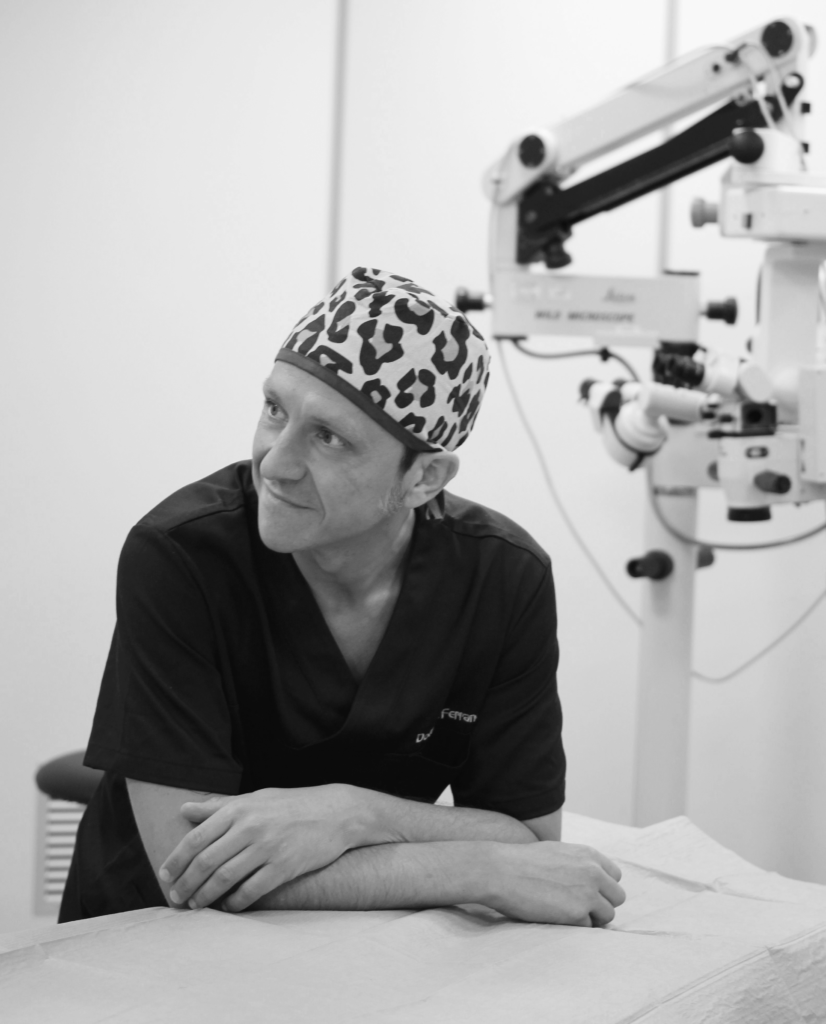Medical doctors and Surgeons
Oncoplastic surgery. The innovation of techniques
Pietro Ferrando, Plastic Surgeon and Oncoplastic at the Department of Plastic Surgery of the Breast Unit in the City of Health and Science of Turin, tells us about how the collaboration with patients and the evolution of oncoplastic techniques help to achieve good results, such as reducing complications, in the fight against breast cancer.
Oncoplasty techniques

Oncoplastic surgery is a surgical method that began in the 1990s and consists in combining non-destructive breast cancer surgery with plastic surgery techniques. The aim is to obtain a tumor removal with wider resection margins compared to conservative surgery. This way, the aesthetic result is similar to what would be expected from plastic surgery techniques designed exclusively for functional and aesthetic purposes.
Before performing an operation, it is always necessary to consider the risk factors of each patient with a screening. Oncoplastic is generally applied as a technique when the lesion is monocentric and monofocal: this is the principle for which it was born. Other features must be considered besides the localization of the mass, such as the shape and conformation of the breast and the relationship between its volume and the volume of the tumor. The combination of these three elements determines which of the techniques is most suited. It can be a first-level oncoplastic, academically defined as 20% of removed tissue, while the second-level removes from 20 to 50% of the tissue. Other techniques can be chosen, such as those that recall the breast reduction, characteristic of a second level mastoplasty. Oncoplastic can be applied in these situations, as it was initially thought.
Extensive oncoplastic was introduced in 2019. It is an application of oncoplastic techniques also applicable to multicentric multifocal diseases, extensive carcinomas and locally advanced forms of disease, therefore also to tumors that weren’t treated with this method before. Currently, this technique must be applied in a focused manner, certain of the result, especially oncological, in terms of tumor remediation.
Disposable negative pressure therapy
Disposable negative pressure therapy in breast cancer interventions reduces complications. This method consists in the application of a closed dressing that creates a complete barrier between the wound and the external environment. There is a decrease in tension at the level of the incision, a reduction in the accumulation of fluid below the incision and a stimulation of the lymphatic system that drains more fluids, reducing edema. In addition, this therapy results in a reduction of general complications also of those related to skin death, which occurs at the edges of the mastectomy. There is also a lower need for re-intervention and a lower timing, on average, of permanence of the drains.
All questionnaires administered both subjective and objective have shown that the use of negative pressure on closed surgical wounds is able to improve the result. This leads to a better healing path and immediately determines a more stable outcome. In terms of quality of life the result is better perceived by the patient.




































